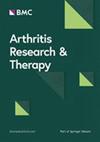巨细胞动脉炎低基线c反应蛋白患者的患病率、特征和预后
IF 4.6
2区 医学
Q1 Medicine
引用次数: 0
摘要
升高的炎症标志物在巨细胞动脉炎(GCA)患者的诊断和随访中起着至关重要的作用。本研究旨在描述77%的低CRP患者中低基线(4 g/L)患者的患病率、特征和结局。尽管临床表现不同,复发率在两组之间是平衡的。低CRP的GCA患者并不罕见,在我们的研究中表现为更多的眼部和周围血管受累以及较少的体质症状。这些患者的纤维蛋白原升高提示尽管CRP水平较低,但仍存在活动性炎症。即使CRP < 10mg /L,临床医生也应考虑GCA,因为这些患者可能出现严重的并发症。本文章由计算机程序翻译,如有差异,请以英文原文为准。
Prevalence, characteristics, and outcomes of patients with low baseline C-reactive protein in giant cell arteritis
Elevated inflammatory markers play a crucial role in the diagnosis and follow-up of patients with giant cell arteritis (GCA). This study aimed to describe the prevalence, characteristics, and outcomes of patients with low baseline (< 10 mg/L) C-reactive protein (CRP) in GCA. A retrospective observational study was conducted at Lille University Hospital, involving all patients diagnosed with GCA between January 2000 and April 2023. Patients were categorized based on their CRP level at diagnosis. Baseline characteristics, clinical manifestations, laboratory findings, imaging results, and outcomes were compared between patients with baseline CRP < 10 mg/L (“low CRP”) and those with CRP ≥ 10 mg/L (“high CRP”). Of the 380 patients, 7.6% (n = 29) had baseline CRP < 10 mg/L at diagnosis. When compared to the high CRP group, the low CRP group exhibited a lower incidence of fever, and had a higher incidence of ocular involvement, particularly anterior ischemic optic neuropathy (28% vs. 13%, p = 0.04), and limb claudication (24% vs. 8%, p < 0.01). Plasma fibrinogen levels were elevated (> 4 g/L) in 77% of patients with low CRP. Despite differences in clinical presentation, relapse rates were equilibrated between the two groups. GCA patients with low CRP are not rare and present with more ocular and peripheral vascular involvement and less constitutional symptoms in our study. Elevated fibrinogen in these patients suggests active inflammation despite low CRP. Clinicians should consider GCA even with a CRP < 10 mg/L, as these patients may present with severe complications.
求助全文
通过发布文献求助,成功后即可免费获取论文全文。
去求助
来源期刊

Arthritis Research & Therapy
RHEUMATOLOGY-
CiteScore
8.60
自引率
2.00%
发文量
261
审稿时长
14 weeks
期刊介绍:
Established in 1999, Arthritis Research and Therapy is an international, open access, peer-reviewed journal, publishing original articles in the area of musculoskeletal research and therapy as well as, reviews, commentaries and reports. A major focus of the journal is on the immunologic processes leading to inflammation, damage and repair as they relate to autoimmune rheumatic and musculoskeletal conditions, and which inform the translation of this knowledge into advances in clinical care. Original basic, translational and clinical research is considered for publication along with results of early and late phase therapeutic trials, especially as they pertain to the underpinning science that informs clinical observations in interventional studies.
 求助内容:
求助内容: 应助结果提醒方式:
应助结果提醒方式:


